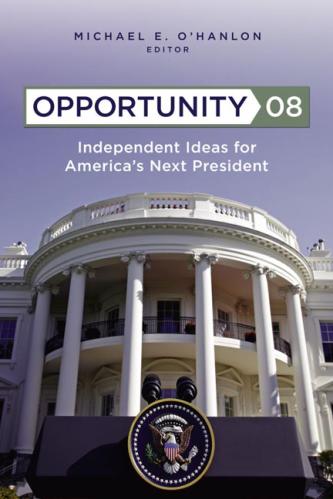This post is a summary of research and discussion at an event held on April 19th, 2022. Watch the full video here.
By the year 2040, 14 million Americans will be age 85 or older, more than double today’s number. A majority of those seniors will need some assistance with daily tasks. Who will provide care for tomorrow’s elderly? On April 19, 2022, the Center on Children and Families hosted an event examining the role of immigrants in meeting the labor needs of the caregiving industry today and in the future. Brookings David M. Rubenstein Fellow Tara Watson, University of Connecticut Professor Delia Furtado, and DIW Berlin Research Affiliate Julia Schmieder presented research, followed by analysis of the policy landscape by Anne Tumlinson, CEO of ATI Advisory, Howard Gleckman of the Urban-Brookings Tax Policy Center, and Kristie De Peña, Vice President for Policy and Director of Immigration Policy at the Niskanen Center. The panel was moderated by former Center Director Kristin Butcher. Here are some of the major takeaways our researchers provided:
The presence of a robust immigrant workforce increases the likelihood that Americans can age-in-place or stay in the community. Research by Tara Watson, Kristin Butcher, and MIT PhD candidate Kelsey Moran finds institutionalization of the elderly has been on the decline, and immigration is one of several factors facilitating this decrease. Due to the rapid increase in immigration between 1980-2000, the rates of institutionalization were 10 percent lower in the year 2000 than if immigration rates remained at 1980 levels, according to the study’s authors. However, new immigration inflows have sharply declined in the past five years, and it is crucial to think about how this trend will impact the ability of seniors to age in place.
Immigration-induced increases in the supply of home-based formal care services mitigate the negative labor market consequences on adult children when the health of elderly parents declines. Research by Julia Schmieder and coauthors Wolfgang Frimmel, Martin Hall, and Jörg Paetzold offers the perspective of adult children on the caregiving challenge. Three years after a parental health decline, adult children in Austria experienced an average of 6 percent lower earnings compared to what they earned before the onset of the condition. The effect was larger for daughters and for those living in close proximity to their parents. However, when Austria loosened immigration restrictions to allow migrant workers into the caregiving industry, these effects were muted.
When there are more people in the area available to work due to immigration, nursing homes are better staffed and shortages of registered nurses can be filled and quality of service is higher, even without having to increase wages. University of Connecticut Professor of Economics Delia Furtado and her collaborator, Queens College Professor Francesc Ortega, find that staffing issues and shortages are some of the largest challenges that nursing homes face. Their research found that an increase in the number of immigrants in local labor markets between 2000-2010 led to a 4 percent decrease in the number of nursing home residents who had fallen in previous months, an indication that better staffing leads to more attentive, higher quality care.
Three policy experts who followed the research presentations highlighted several key themes:
- Inflexibility in employment-based channels for legal migration makes it hard to respond to changing needs. Kristie De Peña of the Niskanen Center explained that the United States has been experiencing reduced rates of net migration, and the lack of evolution in the U.S.’s immigration policies has exacerbated this decline. In order to address the labor shortage and subsequent shortage of caregivers in the coming years, the immigration system must become more expansive and responsive, argued De Peña. Her suggestions include considering special visa programs that prioritize nurses and caregivers from other nations, as well as an update to the Department of Labor’s Schedule A jobs list, which highlights the shortages in certain sectors.
- The absence of a national long-term care system creates financial hardship among aging Americans and burdens families. Medicare covers medical and short-term institutional care for most older Americans, but the program does not cover long-term caregiving needs. Medicaid offers support only if families are below a certain income and after they have exhausted their assets, and Medicaid coverage for home and community-based services varies by state. Anne Tumlinson of ATI Advisory noted that the lack of a national long-term care system in the United States results in severe negative economic impacts for American families and creates hardship for family caregivers.
- Low wages in the caregiving industry also create challenges for the labor market. Howard Gleckman of the Urban-Brookings Tax Policy Center reminded us that caregivers are paid very low wages, resulting in many of them living in poverty. Gleckman called for a reallocation of resources to allow for increased wages so that U.S.-born and immigrant caregivers are incentivized to stay in the field.
The looming challenges of caregiving in the United States over the coming years mandate an innovative approach to immigration, and research such as that highlighted here helps paint a clearer picture of what obstacles may be ahead without swift and comprehensive intervention.
The Brookings Institution is financed through the support of a diverse array of foundations, corporations, governments, individuals, as well as an endowment. A list of donors can be found in our annual reports published online here. The findings, interpretations, and conclusions in this report are solely those of its author(s) and are not influenced by any donation.






Commentary
Looming caregiving challenges demand innovative immigration policies
July 8, 2022